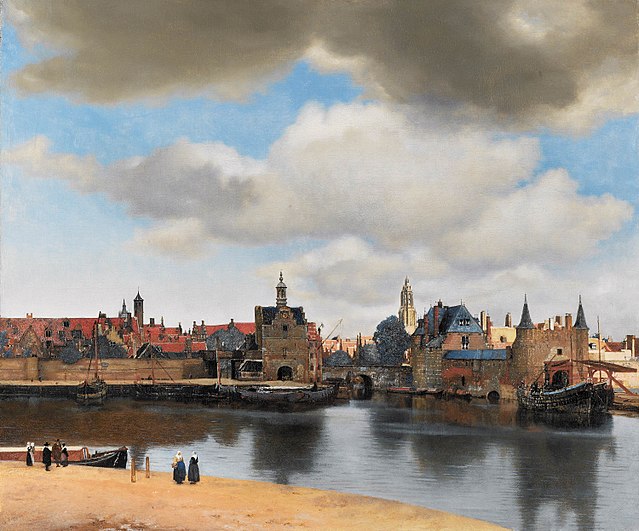Culture of the Netherlands
The culture of the Netherlands is diverse, reflecting regional differences as well as the foreign influences built up by centuries of the Dutch people's mercantile and explorative spirit. The Netherlands and its people have long played an important role as centre of cultural liberalism and tolerance. The Dutch Golden Age is popularly regarded as its zenith.
Some symbols and works of Dutch culture.
The Basilica of Saint Servatius (built 570) in Maastricht is the oldest church in the Netherlands.
Johannes Vermeer, View of Delft (Mauritshuis, The Hague) 1660-1661
Vincent van Gogh, Starry Night, 1889, Museum of Modern Art, New York City
The Dutch are an ethnic group native to the Netherlands. They share a common ancestral and cultural heritage and speak the Dutch language. Dutch people and their descendants are found in migrant communities worldwide, notably in Aruba, Suriname, Guyana, Curaçao, Argentina, Brazil, Canada, Australia, South Africa, New Zealand and the United States. The Low Countries were situated around the border of France and the Holy Roman Empire, forming a part of their respective peripheries and the various territories of which they consisted had become virtually autonomous by the 13th century. Under the Habsburgs, the Netherlands were organised into a single administrative unit, and in the 16th and 17th centuries the Northern Netherlands gained independence from Spain as the Dutch Republic. The high degree of urbanisation characteristic of Dutch society was attained at a relatively early date. During the Republic the first series of large-scale Dutch migrations outside of Europe took place.

The conversion of the Frankish king Clovis to Christianity would have great significance in helping shape the identity of the future Dutch people.
The Egmond Gospels contains the oldest known depiction of Dutch individuals, the count Dirk II of Holland and his wife Hildegard of Flanders.
The Act of Abjuration, signed on 26 July 1581, was the formal declaration of independence of the Dutch Low Countries.
Dutch people celebrating the liberation of the Netherlands at the end of World War II on 7 May 1945








